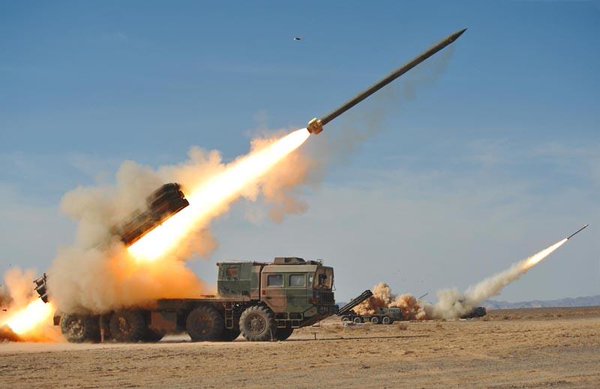SOURCE: IDRW.ORG TEAM

Recent developments in the military capabilities of Pakistan have raised eyebrows in the South Asian region, particularly with regard to its artillery rocket systems. Generous Chinese assistance has played a pivotal role in bolstering the Pakistani Army’s arsenal, leading to the successful testing of the Fatah I and Fatah 2 variants of the Chinese A100 and A300 rocket systems. These advancements have granted Pakistan a considerable edge, particularly in terms of range, when compared to India’s ongoing efforts to upgrade its artillery rocket systems.
The successful tests of the Fatah I and Fatah 2 variants mark a significant milestone for Pakistan, as these rocket systems boast ranges of 140km and 400km, respectively. The crucial element behind these advancements is the substantial support provided by China, which has enabled Pakistan to rapidly enhance its artillery rocket systems. The newfound capabilities position Pakistan ahead of India in terms of range, creating a strategic advantage for the Pakistani military.
In contrast to Pakistan’s recent successes, India’s Guided Pinaka Multi-Barrel Rocket system, with a range of 90km, is yet to enter production. This has placed India at a distinct disadvantage, especially considering that both China and Pakistan have now deployed artillery rocket systems with significantly superior ranges. The Indian Army’s move to request the Defense Research and Development Organization (DRDO) to develop rocket systems with greater range comes after a standoff with the Chinese Army in the Ladakh region, where the People’s Liberation Army (PLA) deployed the A100 rocket system.
In response to the evolving strategic landscape, DRDO is working on two rocket systems with anticipated ranges of 150km and 250km. However, the delay in recognizing the need for enhanced rocket systems and the subsequent lag in development has left the Indian Army in a precarious position. The decision to stick with the Pinaka and BM-30 Smerch, with limited ranges of 90-100km, has highlighted a degree of short-sightedness that the recent geopolitical developments have brought to the forefront.
The growing disparity in artillery rocket system capabilities between India and Pakistan holds significant strategic implications. Range is a critical factor in modern warfare, impacting the military’s ability to engage targets effectively. Pakistan’s rapid advancements, facilitated by Chinese assistance, have underscored the need for India to prioritize the development and deployment of artillery rocket systems with superior range to maintain a competitive edge in the region.
NOTE : Article cannot be reproduced without written permission of idrw.org in any form even for YouTube Videos to avoid Copy right strikes. Websites doing illegal reproductions will get DCMA and Legal Notices.